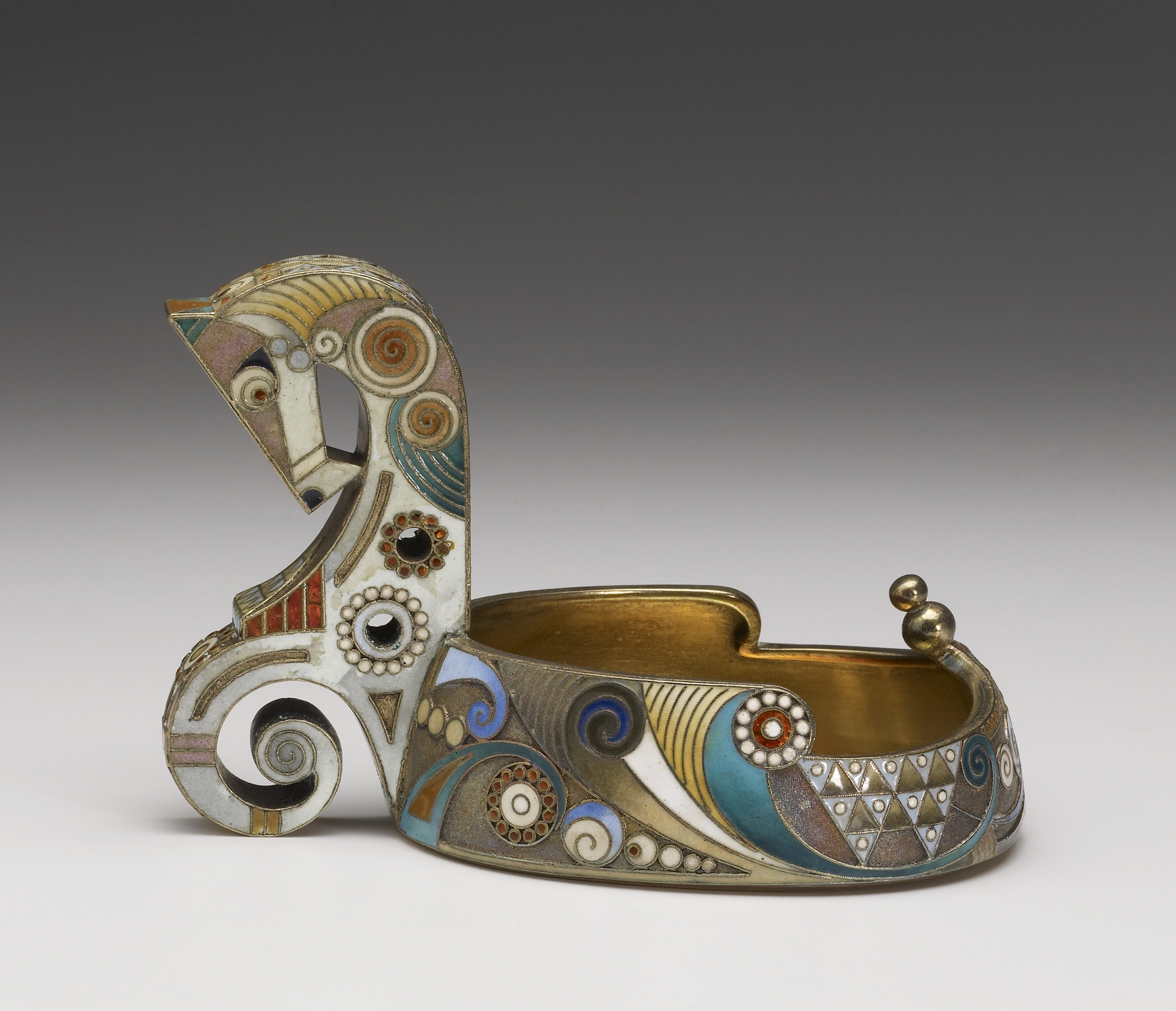Kovsh
(18th and 19th Centuries )
The shape of this "stil moderne" kovsh is suggestive of a horse, or hippocamp, emerging from the waves with its head, neck, and scrolling "feet" constituting the handle. The creature is enameled in painted pastel colors against an opaque grayish white background. The bowl is covered with patterns of opaque, filigree scrolls denoting the frothy waves raised over a stippled gilt ground. Liberal use is made of swirls, triangular shapes, and circles, some of which are in translucent red foiled enamel. Two gilt spheres terminate the kovsh's prow.
Inscription
Provenance
Provenance (from the French provenir, 'to come from/forth') is the chronology of the ownership, custody, or location of a historical object. Learn more about provenance at the Walters.
Jean M. Riddell, Washington, D.C. [date and mode of acquisition unknown]; Walters Art Museum, 2010, by bequest.
Exhibitions
| 2017-2018 | Fabergé and the Russian Crafts Tradition: An Empire's Legacy . The Walters Art Museum, Baltimore. |
Geographies
Russia, Moscow (Place of Origin)
Measurements
Overall H: 3 5/16 × W: 5 × D: 3 1/8 in. (8.4 × 12.7 × 8 cm)
Credit Line
Bequest of Mrs. Jean M. Riddell, 2010
Location in Museum
Not on view
Accession Number
In libraries, galleries, museums, and archives, an accession number is a unique identifier assigned to each object in the collection.
In libraries, galleries, museums, and archives, an accession number is a unique identifier assigned to each object in the collection.
44.797




